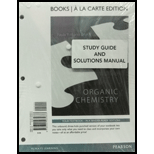
Concept explainers
(a)
Interpretation: An acid-catalyzed and a base-catalyzed rearrangement of a
Concept introduction: The carbon which is adjacent to the carbonyl group is known as
(b)
Interpretation: An acid-catalyzed and a base-catalyzed rearrangement of a
Concept introduction: The carbon which is adjacent to the carbonyl group is known as
Trending nowThis is a popular solution!

Chapter 18 Solutions
Study Guide And Student Solutions Manual For Organic Chemistry, Books A La Carte Edition (7th Edition)
- Draw the keto tautomer of each enol.arrow_forward45. A small, unhindered base:; bulky, hindered base: Hoffman product; Zaitsev product Zaitsev product; Zaitsev product Hoffman product; Hoffman product Zaitsev product; Hoffman productarrow_forwardWhat reagents ( A–D) are needed to carry out each reaction in the following sequence?arrow_forward
 Organic Chemistry: A Guided InquiryChemistryISBN:9780618974122Author:Andrei StraumanisPublisher:Cengage Learning
Organic Chemistry: A Guided InquiryChemistryISBN:9780618974122Author:Andrei StraumanisPublisher:Cengage Learning EBK A SMALL SCALE APPROACH TO ORGANIC LChemistryISBN:9781305446021Author:LampmanPublisher:CENGAGE LEARNING - CONSIGNMENT
EBK A SMALL SCALE APPROACH TO ORGANIC LChemistryISBN:9781305446021Author:LampmanPublisher:CENGAGE LEARNING - CONSIGNMENT

